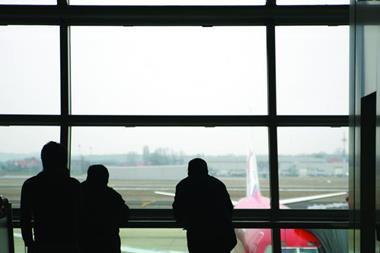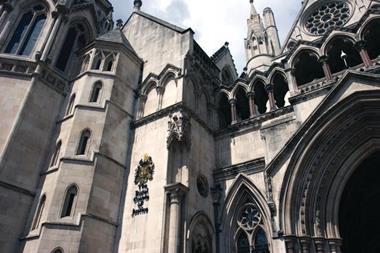Managing the risk of any big event means covering all bases, with some serious forward-planning. Insurance Times gets a play-by-play account of the work that goes into the big one – the Olympic Games
Even the most obsessive-compulsive bridezilla would be out of her depth in the world of events insurance. Brokers who specialise in major events start earlier, plan more thoroughly, produce more paperwork, and obtain more detailed weather forecasts.
Any sizeable event from a trade show to a rock concert will have insurance, and there are many parties with a financial exposure who may wish to buy a policy: the organisers, the sponsors, merchandisers, hotdog vendors operating outside the venue, and so on.
Major events broker Marsh has been involved in every Olympic Games since 1988, and global events director Richard Tolley is just back from the Winter Olympics in Vancouver.
He says the process is broadly the same for all events, but the Olympics, as you might imagine, is the greatest test of them all: “You can’t get much more complicated than the Olympics, as there are so many different sports and venues over 17 days.”
Marsh’s global sports and events practice comprises just four people, but it will pull in other specialists from whichever of its offices are local to the event. For the Olympics, there will be a team of around 25.
Tolley will only talk in generic terms about the extraordinary risk management that goes into such an event, but it’s fair to say your average event broker might want to take a few notes … IT
1. The risk assessment: 5-3 years before the Games (BG)
When would you start insuring the Olympic Games? The answer is three to five years ahead, says Tolley, depending on the progress of the organising committee. First, a strategic risk review of the committee’s plans is done, which can be pretty extensive. There will be a strategic plan, a concept of operations and then a more detailed operational plan.
Tolley says: “The organising committee is a combination of 35-40 smaller function areas, including security, transport, safety, legal, finance … Each one performs a specific function and the risk assessment has to cover all of these.”
The risk assessment is inevitably vague at this stage, and Marsh’s team will identify anything from 400 to 600 risks.
2. Buying insurance: 4-3 years BG
Once the risk assessment is completed, it’s time to decide what cover the event will need. Tolley’s team put together a programme for five areas: liability, casualty, personal accident and medical, travel and motor fleet. “We find a panel of underwriters and explain the risks to them. We will use a dozen or so insurers.”
A very controlled event like the Olympics is a more attractive risk than say, Glastonbury, which has a younger crowd, heavy alcohol consumption, and so on. But, as Tolley says: “The Olympics requires a lot more cover, so we have to go further into the market.”
3. Contingency planning: 15-6 months BG
Next up is contingency planning. There is of course a Plan A, and then Plan B. And Plan C, Plan D, E, F … “30-70 contingency plans get written for things like postponement of sporting events, interruption to primary transport routes, a security breach, injury to an athlete; anything that could have an impact on the event itself or its infrastructure.”
As with any outdoor event, the weather is a crucial factor. “From day one, we were always concerned about a lack of snow,” Tolley says. “You couldn’t even make snow as it was too warm, so they had to go and get it from the other side of the mountain.”
Just as expensive could be interruption to the broadcast signal. “When you’ve got one billion people watching on television around the world, if you lose the signal for eight minutes, that’s a few million dollars.”
4. Operational readiness: 9-6 months BG
Action stations everyone – it’s operational readiness, and time to train the many temporary staff that will flood into the venues and hotels around the host city.
“Most major events have a lot of staff who might not have worked in sport before, or in that specific venue. As part of their training, we give them different scenarios to give them an understanding of what to do in different situations,” Tolley says.
There is also a major piece of work to be done to prepare an emergency evacuation plan.
“If you think about Wembley, for example, you can normally walk straight up to it,” Tolley says.
“But if it’s hosting the Olympics or Commonwealth Games, there’s lots of extra facilities. There are fences, temporary marquees – the whole event is much bigger.”
5. Loss control surveys: 3-2 weeks BG
With everything in place, Marsh despatches its specialists around the Olympic park to undertake a complete audit.
“We carry out loss control surveys on health and safety, fire, security,” Tolley explains.
If anything is found that poses an unacceptable risk, the broker can request that it be changed.
In the UK, local authority planning officers may also play a role in enforcing regulations.
Elsewhere in the world, in Beijing or Athens for example, where there is much less legislation on things like health and safety, it’s more a process of “best practice and negotiation to mitigate risk”.
6. Monitoring incidents: days 1-17 GT (Games time)
So does Tolley get a chance to watch much of the Games? “Put it like this: I’ve watched an hour of snowboarding, 45 minutes of curling, and 20 minutes of moguls. The rest I’ve watched on television.”
And there’s little time to relax. “At the Games, we’re monitoring and recording incidents at venues. Unless you find out about an incident early on, you only know four weeks later when you get a letter from the lawyer. It’s very difficult for the insurer to defend these claims, as you can’t return to the venue or recreate the circumstances.”
The broker’s team has to stay on top of 20-odd venues and hotels. There are also three loss adjustors standing by. “If there’s a major incident, we send a loss adjustor to do an investigation. It’s always pre-planned. To get into the venues at a major event, you need pre-accreditation.”
7. The long clear-up: several years after Games
Marsh’s own loss control officers liaise with insurers on any claim. During an event, they may record between 300 and 1,500 incidents, which will give rise to anything from 20 to 100 claims. During a major two-week competition like the Games, you could expect those numbers to be at the upper end of the scale.
Much has been made of the lasting benefits that London’s own Olympics will bring for east London after 2012. But it seems that insurance claims are certain to be one of the most enduring, if unwelcome, legacies of the Games. “The claims handling team will be involved for two or three years after the event,” Tolley says.
“The organising committee generally tries to shut down and lock up one or two years after it’s finished. But that doesn’t mean all the insurance claims are settled by then.”
Hosted by comedian and actor Tom Allen, 34 Gold, 23 Silver and 22 Bronze awards were handed out across an amazing 34 categories recognising brilliance and innovation right across the breadth of UK general insurance.














































No comments yet